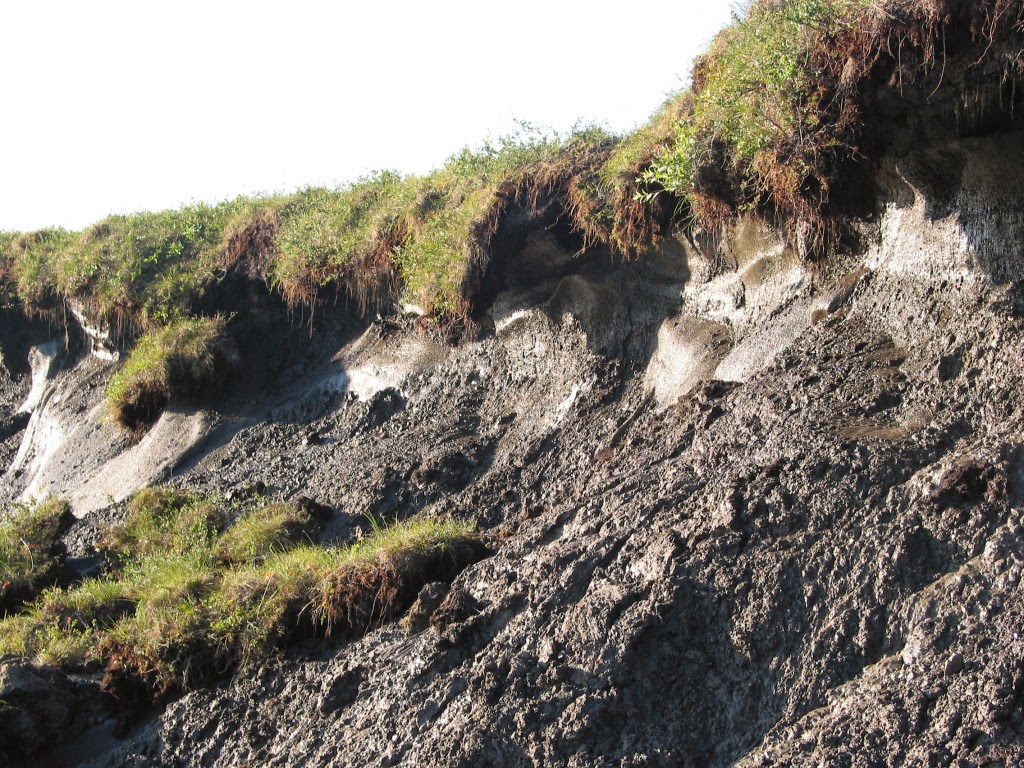
As the Earth’s climate continues to warm, researchers are working to understand how human-driven emissions of carbon dioxide will affect the release of naturally occurring greenhouse gases from arctic permafrost. As the perennially frozen soil continues to thaw, the increase of greenhouse gas emissions could significantly accelerate warming conditions changes on Earth.
An estimated 1,330 billion to 1,580 billion tons of organic carbon are stored in permafrost soils of Arctic and subarctic regions with the potential for even higher quantities stored deep in the frozen soil. The carbon is made up of plant and animal remnants stored in soil for thousands of years. Thawing and decomposition by microbes cause the release of carbon dioxide and methane greenhouse gases into the atmosphere.
“Our big question is how much, how fast and in what form will this carbon come out,” said Ted Schuur, NAU biology professor and lead author on a paper published in Nature.
The rate of carbon release can directly affect how fast climate change happens.
Schuur and fellow researchers coalesced new studies to conclude that thawing permafrost in the Artic and sub-Arctic regions will likely produce a gradual and prolonged release of substantial quantities of greenhouse gases spanning decades as opposed to an abrupt release in a decade or less.
Modern climate change is often attributed to human activities as a result of fossil fuel burning and deforestation, but natural ecosystems also play a role in the global carbon cycle. “Human activities might start something in motion by releasing carbon gases but natural systems, even in remote places like the Arctic, may add to this problem of climate change,” Schuur said. During the past 30 years, temperatures in the Arctic have increased twice as fast as other parts of the planet.
Schuur and his team of researchers from around the world also present next steps for improving knowledge of permafrost carbon and how the dynamics will affect the global carbon cycle. Approaches include improving climate change models by integrating newly created databases, changing models to differentiate between carbon and methane emissions and improved observations of carbon release from the landscape as the Arctic continues to warm.
Reference:
Climate change and the permafrost carbon feedback
E. A. G. Schuur, A. D. McGuire, C. Schädel,G. Grosse, J. W. Harden, D. J. Hayes,G. Hugelius, C. D. Koven, P. Kuhry,D. M. Lawrence, S. M. Natali, D. Olefeldt,V. E. Romanovsky, K. Schaefer, M. R. Turetsky, C. C. Treat& J. E. Vonk. DOI:10.1038/nature14338
Note : The above story is based on materials provided by Northern Arizona University.










